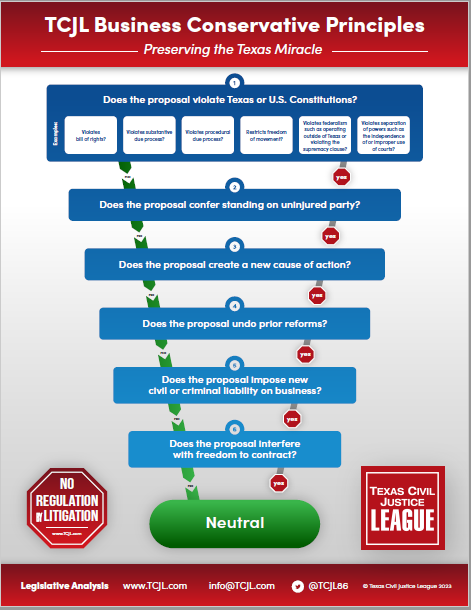 Johnny Baker and Laecrecia Baker v. Devante Williams; and Swift Transportation Co. of Arizona, LLC (No. 03-23-00266-CV; April 25, 2024) arose from a rear-end collision involving two tractor-trailers. Defendant Williams had pulled his truck onto the shoulder of the interstate when it suffered mechanical problems. Plaintiff Baker subsequently veered onto the shoulder and struck Williams from behind. The DPS officer who arrived on the scene reported that Baker had improperly driven onto the shoulder, that Williams’s truck was disabled, and that Williams failed to place emergency reflective triangles behind his truck (which he concluded was not a contributing factor in the accident). He also reported that Baker may have been fatigued or asleep when the accident occurred. Baker sued Williams and Swift for negligence and negligent training and supervision. Prior to trial, Baker made a motion in limine to exclude the DPS officer’s report on the ground that the officer was not an expert on the safe operation of a commercial vehicle. The trial court denied the motion and admitted the report and his deposition, which the jury considered along with video evidence and testimony from 21 witnesses. The jury assigned 100% of the fault to Baker. The trial court entered a take-nothing judgment in favor of Williams and Swift. Baker appealed.
Johnny Baker and Laecrecia Baker v. Devante Williams; and Swift Transportation Co. of Arizona, LLC (No. 03-23-00266-CV; April 25, 2024) arose from a rear-end collision involving two tractor-trailers. Defendant Williams had pulled his truck onto the shoulder of the interstate when it suffered mechanical problems. Plaintiff Baker subsequently veered onto the shoulder and struck Williams from behind. The DPS officer who arrived on the scene reported that Baker had improperly driven onto the shoulder, that Williams’s truck was disabled, and that Williams failed to place emergency reflective triangles behind his truck (which he concluded was not a contributing factor in the accident). He also reported that Baker may have been fatigued or asleep when the accident occurred. Baker sued Williams and Swift for negligence and negligent training and supervision. Prior to trial, Baker made a motion in limine to exclude the DPS officer’s report on the ground that the officer was not an expert on the safe operation of a commercial vehicle. The trial court denied the motion and admitted the report and his deposition, which the jury considered along with video evidence and testimony from 21 witnesses. The jury assigned 100% of the fault to Baker. The trial court entered a take-nothing judgment in favor of Williams and Swift. Baker appealed.
In an opinion by Chief Justice Byrne, the court of appeals affirmed. Baker argued that the trial court abused its discretion by admitting the officer’s accident report and portions of his deposition. Unfortunately for Plaintiff, the court did not receive substantial parts of the record, including a “statement of the points or issues to be presented on appeal.” The court thus could not “determine whether other testimony in the record may have been relevant to the issues on appeal or the emphasis, if any, placed on Trooper Gutierrez’s testimony during those missing portions.” Consequently, the court has to presume that the missing parts of the record supported the trial court’s judgment.
Even so, the court concluded that it “cannot say the admission of Trooper Gutierrez’s testimony was so harmful as to probably cause an improper judgment.” In fact, the trooper’s testimony proved to be “largely cumulative of other evidence in the partial record,” including video evidence from the inside of Plaintiff’s cab showing the accident. Indeed, the record pointed to the crucial role the video and the expert witnesses who explained it played in the jury’s decision. Even Plaintiff’s expert would not say that Williams’s failure to put out reflective triangles would have prevented the accident if Plaintiff were distracted, as the evidence showed he was. The court further rejected Plaintiffs’ argument that they jury must have given undue weight to the trooper’s testimony because he was the only “disinterested” witness. Finally, the judgment could not be improper just because the jury assigned no fault to Defendant—it’s the jury’s job, after all, to resolve conflicts in the evidence, if they even existed in this case.











